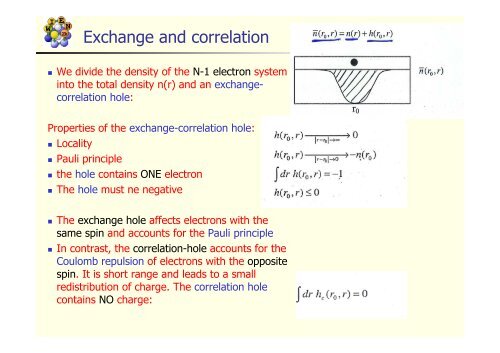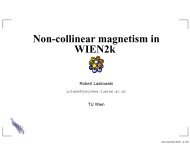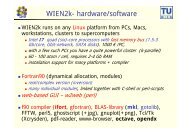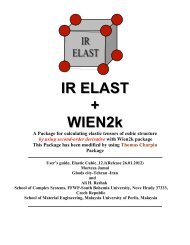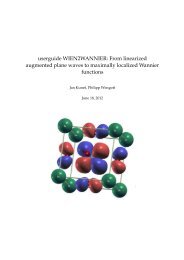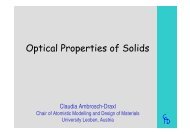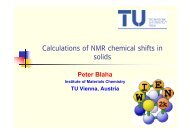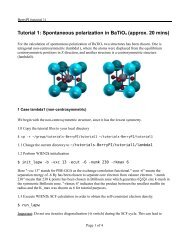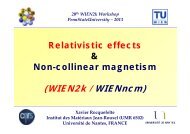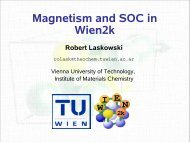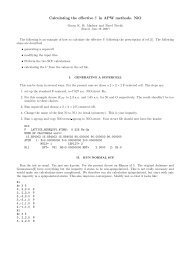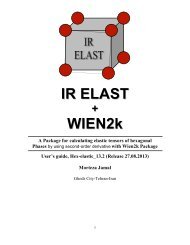Introduction to Solid State theory, DFT and the APW-method - WIEN 2k
Introduction to Solid State theory, DFT and the APW-method - WIEN 2k
Introduction to Solid State theory, DFT and the APW-method - WIEN 2k
- No tags were found...
You also want an ePaper? Increase the reach of your titles
YUMPU automatically turns print PDFs into web optimized ePapers that Google loves.
Exchange <strong>and</strong> correlation• We divide <strong>the</strong> density of <strong>the</strong> N-1 electron systemin<strong>to</strong> <strong>the</strong> <strong>to</strong>tal density n(r) <strong>and</strong> an exchangecorrelationhole:Properties of <strong>the</strong> exchange-correlation hole:• Locality• Pauli principle• <strong>the</strong> hole contains ONE electron• The hole must ne negative• The exchange hole affects electrons with <strong>the</strong>same spin <strong>and</strong> accounts for <strong>the</strong> Pauli principle• In contrast, <strong>the</strong> correlation-hole accounts for <strong>the</strong>Coulomb repulsion of electrons with <strong>the</strong> oppositespin. It is short range <strong>and</strong> leads <strong>to</strong> a smallredistribution of charge. The correlation holecontains NO charge:


